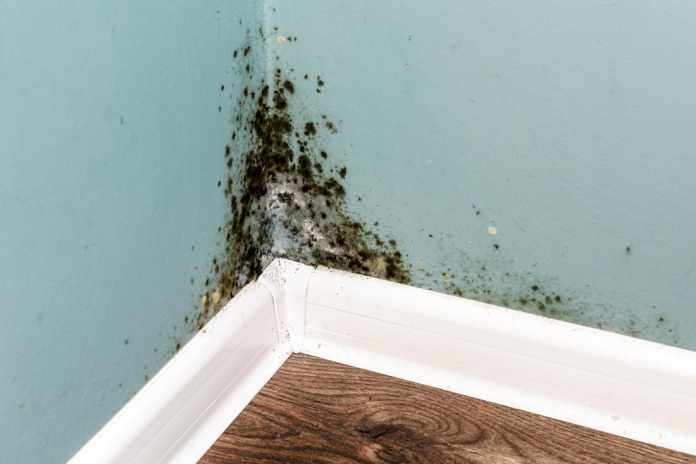Around 70 percent of homes have mold. Some have it worse than others. Wondering how you can prevent serious mold in your home?
There are ways you can prevent serious mold growth. Since mold can cause serious health problems, prevention is key. Here are eight tips to prevent mold in the house.
Table of Contents
1. Proper Ventilation
Some of your routine activities, like cooking and taking a shower, may actually encourage mold growth. This is why it’s vital you have proper ventilation in your kitchen, bathroom, laundry room, and any other room that has a lot of moisture.
You should make sure your appliances have proper ventilation to the outside. Your dryer vent, bathroom vent, and stove should go outside and not into your attic.
You may also want to open your windows as you cook, shower, or wash dishes to let the air circulate and flow. You should run an exhaust fan during your bath or shower, and then let it run for about 30 minutes or more after you are done.
2. Dry Wet Areas
Mold needs moisture to grow. If you take moisture out of the equation, mold cannot grow. This means you should dry any wet areas immediately.
If you have a spill on the carpet, make sure it is dry within 24 to 48 hours. Check your basement after heavy rainfall. Look for any water accumulation on a leaky pipe.
For any flooding, you should remove water-damaged bedding, carpet, and furniture immediately. Run fans and the dehumidifier.
After you take a shower, dry the shower walls and floor. You can use a squeegee to get the moisture away. You should also remove your product bottles, sponges, or loofahs after a shower so they can dry.
Wash your mats, towels, and rugs regularly. Be sure you do not leave wet clothes in the washer. Mold can spread really quickly.
3. Monitor Indoor Humidity
Try to keep your indoor humidity around 30 to 60 percent. If you aren’t sure your humidity level, you can use a moisture meter and check multiple times a day because humidity levels can change throughout the day. You can purchase these at your local hardware store.
You can detect when your humidity levels are higher than normal. Pay attention to problem areas in your homes. Look for condensation on pipes, walls, and windows. If you notice any condensation, dry the area immediately and fix the source of moisture.
You can use a dehumidifier to remove moisture from the air. You may want to run one even if your levels aren’t too high. You may be surprised just how much water the dehumidifier picks up in a few hours. Don’t forget to empty the bucket regularly.
4. Improve Air Flow
When temps lower, the air actually holds less moisture. If you don’t have good airflow in your home, you may actually see moisture on your windows, floors, and walls. Open your doors between rooms.
Make sure furniture is away from the walls and vents. You can also open your closet doors. When the weather is good, let the fresh air for moisture control.
5. Clean or Repair Roof Gutters
If you have clogged gutters, you can get a leaky roof. This is why it’s imperative that you clean your gutters regularly. If you see spots on your ceiling, check the roof immediately for leaks.
If you think you have a roof leak, it’s time to call the professionals because a small problem can quickly become a big problem. Mildew inspection and removal are best left to those with the right equipment and proper training. They can also help you with problems in the future.
6. Watch Your Houseplants
Houseplants are great for inside your home because not only are they beautiful but they also help keep the air clean. However, mold also loves houseplants. Mold loves the moist soil, and this mold can spread beyond your houseplants.
Don’t worry, you don’t have to get rid of houseplants. You can try adding some Taheebo tea to your water because this tree oil withstands fungi—even in the tropical rainforests! You can find this product in most natural food stores.
7. Check for Leaks Regularly
You should always watch for leaks, so you can dry and solve the problem quickly. Common spots to check include around your washing machine, dishwasher, under the sinks, behind the toilets, and under radiators. If you see any leaks, fix them immediately or call a plumber so moisture does not build up.
Also, look for any cracks around your home. Check your basement walls for any dampness after heavy rain.
8. Use Mold-Killing Cleaners
When you clean your bathroom, make sure you use mold-killing chemicals. Don’t worry you can use some non-toxic chemicals like bleach, vinegar, or hydrogen peroxide. Spray your shower regularly with one of these chemicals and let it sit for a few hours to kill any mold.
Be careful if you use bleach. You should never mix it with ammonia or other household cleaners because it can produce a dangerous (and poisonous) gas. White vinegar is one of the easiest household cleaners to use that is gentle and effective. This is one of the best ways to prevent mold in the house.
Prevent Mold in the House
You can prevent mold in the house. It’s important that you keep areas dry and let the air circulate through your home. Remember, if you think you have a serious mold problem, it’s best to talk to a professional to remove and prevent mold in the future.
There is really no one-size-fits-all process to keep mold out of your home. You need to be aware of your climate. You may have more work in the summer to remove mold, or you may have to follow these practices all year if you live in a humid climate.
Looking for more home advice? Keep checking out our website for more great home and health tips.






